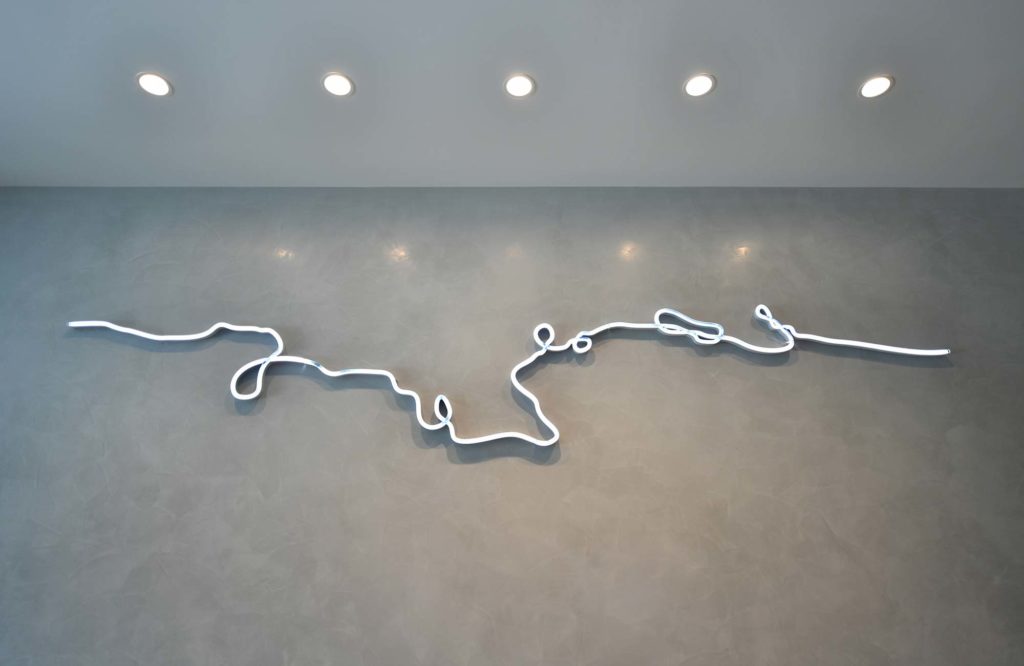
Agnieszka Kurant
The End of Signature (2016)
LED lights, aluminum and acrylic
26 x 143-1/2 x 1-1/2 inches
Ever since writing was invented, the handwritten signature has been linked to human identity, presence, and consciousness. To sign one’s name is to say: “I am here. Fully cognizant of my actions, I consent to what is written above my signature.” Legally, signatures represent individuals, or individuals acting on behalf of others, sometimes spouses or partners, but also large groups, like stakeholders, whose interests they represent.
Agnieszka Kurant’s wall-mounted sculpture invites viewers to ponder the relationships between individuals and their signatures, as well as between individuals and groups, particularly as they take shape in a world of digitally transmitted information. As keystrokes and the electronic impulses they generate are replacing pens and paper, ideas about what it means to be an individual are changing.
To make “The End of Signature,” Kurant amassed hundreds of signatures of visitors to the opening reception of “Storylines,” a 2015 exhibition at the Guggenheim Museum in Bilbao, Spain. Using software she developed with a programmer, the Poland-born, New York-based artist has morphed the collected signatures into a single “signature.” Enlarging the cursive squiggle into a 12-foot-long sign, she programmed its LED lights to illuminate and fade, from left to right, suggesting that an invisible hand is continuously signing its name on the wall.
Silently and abstractly, without words or images, her work pays haunting homage to one way of marking identity while anticipating a future in which digital technology has not only transformed the way we communicate, but has also changed the way we see ourselves, both as individuals and members of groups bigger than any of us.
Return to Collection